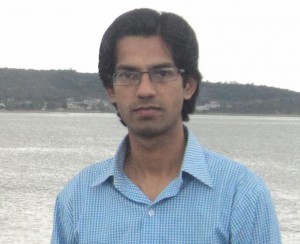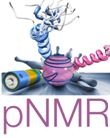 I am from Lahore, Pakistan. In 2010, I received my B.Sc. (Hons) degree in Physics with specialization in Solid State Physics from University of the Punjab, Pakistan. In the same year, I was admitted in the Master of Philosophy (Physics) degree program of the University of Punjab, Pakistan. My teachers have always been a source of motivation for me, especially Dr. Azmat Saeed (PU, Pakistan) and Dr. Mahmood ul Hassan (PU, Pakistan). In 2012, I received my M.Phil. (Physics) degree and completed a thesis entitled ‘Magnetic Properties of Mn-Doped ZnO: First Principle Study’. My interest in computational material sciences or chemistry was enhanced while working with Dr. Fakharul Inam (LUMS, Pakistan) and Dr. Hafiz M. Rafique (PU, Pakistan). In the meantime, I taught high school pupils for a year (2012-2013) under the Government of Punjab, School Education Department. During the same year (2013), I got the opportunity to work within the pNMR project. Presently, I am working as a Early Stage Researcher (ESR, PhD student) with Prof. Juha Vaara at the University of Oulu, Finland, where I am focusing on the development of the theory and quantum-mechanical electronic structure calculations of NMR chemical shift in paramagnetic systems.
I am from Lahore, Pakistan. In 2010, I received my B.Sc. (Hons) degree in Physics with specialization in Solid State Physics from University of the Punjab, Pakistan. In the same year, I was admitted in the Master of Philosophy (Physics) degree program of the University of Punjab, Pakistan. My teachers have always been a source of motivation for me, especially Dr. Azmat Saeed (PU, Pakistan) and Dr. Mahmood ul Hassan (PU, Pakistan). In 2012, I received my M.Phil. (Physics) degree and completed a thesis entitled ‘Magnetic Properties of Mn-Doped ZnO: First Principle Study’. My interest in computational material sciences or chemistry was enhanced while working with Dr. Fakharul Inam (LUMS, Pakistan) and Dr. Hafiz M. Rafique (PU, Pakistan). In the meantime, I taught high school pupils for a year (2012-2013) under the Government of Punjab, School Education Department. During the same year (2013), I got the opportunity to work within the pNMR project. Presently, I am working as a Early Stage Researcher (ESR, PhD student) with Prof. Juha Vaara at the University of Oulu, Finland, where I am focusing on the development of the theory and quantum-mechanical electronic structure calculations of NMR chemical shift in paramagnetic systems.
| Home Country | Pakistan |
| Project Topic | pNMR theory interfacing experiments: interpretation and excited states |
| Project Description | The main aim of the project is the development of the theory and quantum-mechanical electronic structure calculations of NMR chemical shift in paramagnetic systems. The host group (NMR Research Group, Oulu, Finland) has worked on this topic for about 10 years and produced several levels of systematic methods for pNMR shift (non-relativistic doublet case, relativistically corrected doublet, general theory of higher multiplicities). Due to the fact that paramagnetic metal-containing systems frequently contain low-lying, electronically excited states, there is a need to extend to current methodologies to take systematically into account low-lying excited states, which have a substantial thermal occupation in experimental conditions. Furthermore, the established experimental practice within pNMR is to divide the observed NMR chemical shifts into contact, pseudo-contact, and orbital contributions in a way that is not fully compatible with the new advances in pNMR shift theory. Therefore, the two paradigms (experimental and theoretical) need to be brought together, to facilitate further progress in pNMR. |
| Project Home | University of Oulu |
| Supervisor | Juha Vaara |
| Starting Date | November 2013 |
| Publications | In preparation |
| Meetings | pNMR Training School, February 2014, Mariapfarr, Austria Title: Electronic and Nuclear Relaxation, and Electronic Structure Calculation Role: participant pNMR Mid-Term Review Meeting, September 2014, Cambridge, UK Role: participant pNMR Applied Training, June 2015, Berlin, Germany Title: Introduction to practical pNMR shift calculations Role: participant pNMR Complementary Skills Training, July 2015, Prague, CZ Title: Personal Skills, conference presentation and Communication Role: participant pNMR Workshop 3, July 2015, Prague, CZ Title: pNMR : from rags to riches, Challenges and potentials of NMR on paramagnetic molecules, Role: speaker pNMR Applied Training, May 2016, Florence, IT Title: Expression and purification of metalloproteins for structural studies and Paramagnetic restraints in hybrid methods for protein structural analysis, Role: participant |
| Secondments | TUB, Germany, 2nd June – 29th August 2014, May-August 2015, BBIO, Germany, May-August 2016, Bratislava, Slovakia |
